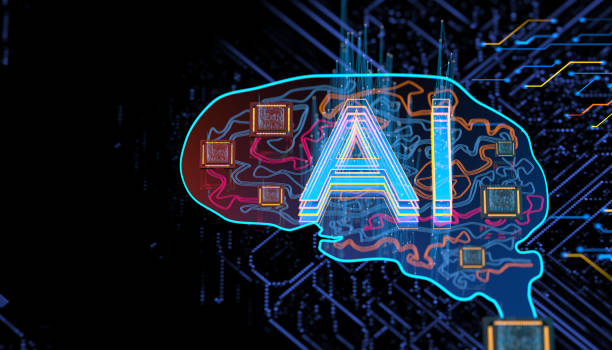The Dawn of the AI Robot Era: What and Why
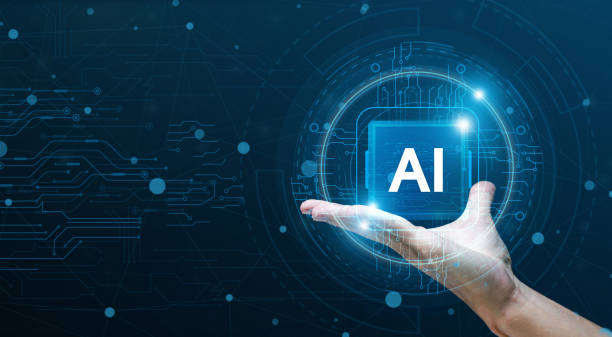
Today’s world is witnessing remarkable advancements in the field of #Artificial_Intelligence.
One of the prominent manifestations of these advancements is the emergence of AI robots.
But what exactly is an AI robot, and why is it so important? In this chapter, we answer these questions and explore the concept of AI robots, their applications, and the benefits of using them.
An AI robot, in short, is a computer system or machine capable of performing tasks that typically require human intelligence.
These tasks include learning, reasoning, problem-solving, perception, and interaction with the surrounding environment.
The importance of AI robots in the current era is justifiable for various reasons.
Firstly, these robots can increase efficiency and productivity in many industries and fields.
For example, in the manufacturing industry, AI robots can perform repetitive and dangerous tasks with greater precision and speed than humans.
Secondly, AI robots can help solve complex problems and major challenges.
For example, in the medical field, AI robots can assist in diagnosing diseases, developing drugs, and providing personalized treatments.
Thirdly, AI robots can make human lives easier and more comfortable.
For example, household robots can help with daily chores, care for the elderly and children, and provide various services.
Finally, AI robots have the potential to bring about deep and widespread transformations in society and the economy.
However, the use of these robots also requires attention to ethical, social, and economic issues.
In subsequent chapters, we will explore these issues and challenges.
Disappointed with your e-commerce site’s low conversion rate? Rasaweb transforms your online store into a powerful tool for attracting and converting customers!
✅ Significant increase in visitor-to-buyer conversion rates
✅ Unparalleled user experience to boost customer satisfaction and loyalty⚡ Get free consultation from Rasaweb!
Main Components of an AI Robot: Hardware and Software Overview
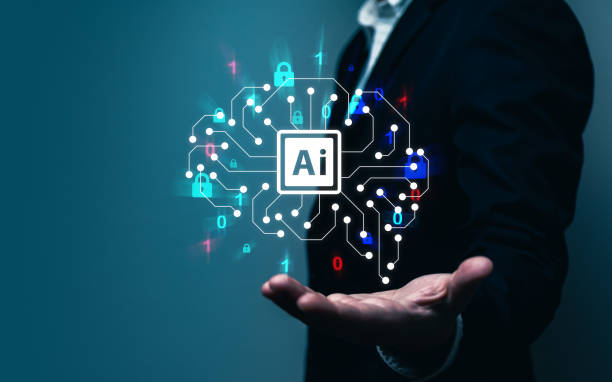
An AI robot consists of two main parts: hardware and software.
Hardware includes the physical components of the robot such as sensors, actuators, processors, and power supply.
Software includes algorithms, machine learning models, and control programs that enable the robot to perform its tasks.
Sensors play a vital role in gathering information from the surrounding environment.
This information can include images, sounds, temperature, pressure, and geographical location.
Actuators are responsible for performing physical actions.
This action can include movement, grasping objects, or producing sound.
Processors are responsible for processing information and executing algorithms.
The power supply provides the energy required for the robot’s operation.
The software of an AI robot includes machine learning algorithms that enable the robot to learn from data and improve its performance.
These algorithms can include neural networks, decision trees, and support vector machines.
Control programs are responsible for coordinating and controlling the hardware components of the robot.
These programs determine how the robot should respond to information collected by sensors and what action to take.
The interaction between hardware and software is essential for the proper functioning of an AI robot.
Hardware collects information from the environment, and software processes this information and sends necessary commands to the hardware.
This cycle repeats continuously, allowing the robot to interact with its surroundings and perform its tasks.
Types of AI Robots: From Industrial to Household
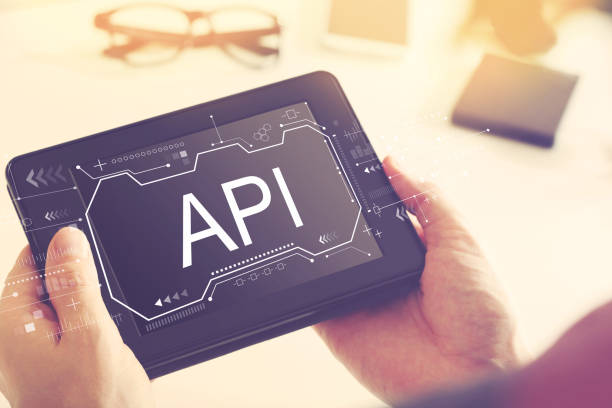
AI robots are produced in various types, each designed for specific applications.
Some common types of AI robots include industrial robots, service robots, medical robots, household robots, and military robots.
Industrial robots are used in factories and production environments to perform repetitive, dangerous, and precise tasks.
These robots can help increase efficiency, reduce costs, and improve product quality.
Service robots are used in public environments such as hospitals, hotels, and airports to provide various services to customers.
These robots can help with carrying luggage, cleaning, providing information, and guidance.
Medical robots are used in hospitals and treatment centers to assist with surgery, rehabilitation, and patient care.
These robots can help increase surgical precision, reduce pain, and improve treatment outcomes.
Household robots are used in homes for daily chores, caring for the elderly and children, and providing various services.
These robots can help with cleaning, cooking, shopping, and pet care.
Military robots are used in the army and armed forces for dangerous tasks, identifying and neutralizing mines, and gathering information.
These robots can help reduce human casualties and increase security.
| Robot Type | Applications |
|---|---|
| Industrial | Performing repetitive and dangerous tasks in factories |
| Service | Providing services to customers in public environments |
Machine Learning: The Beating Heart of AI Robots

Machine learning is one of the most important parts of an AI robot.
Machine learning enables the robot to learn from data and improve its performance.
Without machine learning, an AI robot would not be able to perform complex tasks and adapt to new environments.
Various machine learning algorithms exist, each suitable for specific applications.
Some of the most common machine learning algorithms include supervised learning, unsupervised learning, and reinforcement learning.
In supervised learning, the robot is trained using labeled data.
This data includes expected inputs and outputs.
The robot learns how to associate inputs with outputs and can predict new outputs for new inputs.
In unsupervised learning, the robot is trained using unlabeled data.
The robot must discover hidden patterns and structures within the data.
This algorithm is used for clustering data, dimensionality reduction, and discovering association rules.
In reinforcement learning, the robot is trained through trial and error.
The robot is placed in an environment and must receive rewards by performing various actions.
The robot learns how to choose its actions to maximize the received reward.
This algorithm is used for robot control, games, and process optimization.
The choice of the appropriate machine learning algorithm depends on the type of task and the available data.
In many cases, a combination of different algorithms is used to improve robot performance.
Did you know that your company’s website is the first point of contact for 75% of potential customers?
Your website is the face of your brand. With **Rasaweb**’s corporate website design services, build an online presence that attracts customer trust.
✅ Create a professional and lasting image for your brand
✅ Attract target customers and increase online credibility
⚡ Get free consultation from **Rasaweb** experts!
Challenges in AI Robot Development
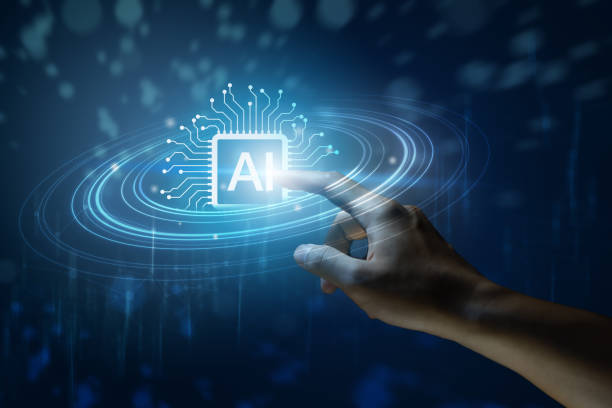
The development of AI robots faces numerous challenges.
Some of these challenges are technical, while others are ethical, social, and economic.
One of the main technical challenges is the collection and processing of large volumes of data.
AI robots require a lot of data to learn and improve their performance.
Collecting and labeling this data can be time-consuming and costly.
Furthermore, processing this data requires high computational power.
Another technical challenge is the development of advanced machine learning algorithms.
Existing algorithms still have limitations in many cases and cannot fully mimic human behavior.
Developing new algorithms and improving existing ones requires extensive research and innovation.
One of the main ethical challenges is the accountability of robots.
If an AI robot makes a mistake, who will be responsible? The manufacturer, the user, or the robot itself? Determining the accountability of robots requires a careful examination of legal and ethical issues.
Another ethical challenge is data privacy.
AI robots need to collect information from users and their surroundings.
This information can include personal data, financial data, and health-related data.
Protecting this information and preventing its misuse is crucial.
From a social and economic perspective, there are concerns about job displacement due to automation.
AI robots have the potential to replace many human jobs.
This can lead to increased unemployment and social inequality.
To address these challenges, we need to invest in research, develop appropriate laws and regulations, and train a skilled workforce.
We must also pay special attention to the ethical, social, and economic issues associated with AI robots.
The Future of AI Robots: What to Expect
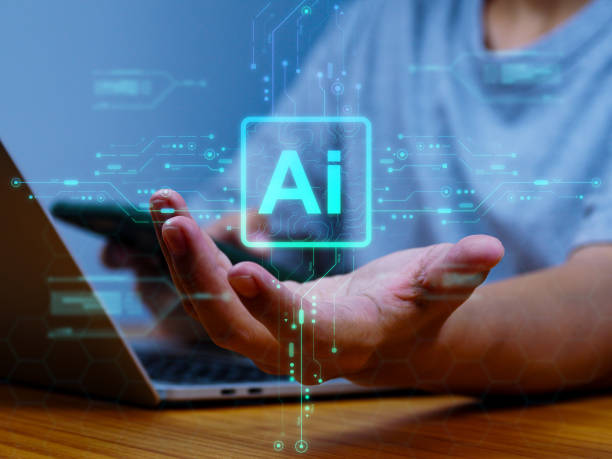
The future of AI robots is very bright and full of potential.
It is expected that in the coming years, we will witness significant advancements in the field of AI robots, and these robots will play a more important role in our lives.
One of the main expectations is the increased intelligence and capability of robots.
Future robots will be able to perform more complex tasks, interact more naturally with their surroundings, and make better decisions.
It is expected that AI robots will gain greater penetration into various industries.
In the manufacturing industry, robots will be able to fully automate production lines and produce higher-quality products.
In the medical field, robots will be able to assist surgeons in performing complex operations, diagnose diseases more accurately, and provide personalized treatments.
In the transportation sector, robots will be able to autonomously drive vehicles and reduce traffic.
It is expected that AI robots will also play a more important role in our daily lives.
Household robots will be able to help with daily chores, care for the elderly and children, and provide various services.
Personal robots will be able to assist us with tasks, learning, and communicating with others.
However, the development of AI robots also requires attention to ethical, social, and economic issues.
We must ensure that robots are used for the benefit of society and prevent the creation of new problems and challenges.
Artificial Intelligence
Case Study of Successful AI Robot Applications

AI robots are currently being successfully used in many industries and fields.
A case study of these applications can help us better understand the potential and benefits of AI robots.
One successful application of AI robots is their use in the manufacturing industry.
Large companies like Tesla use AI robots to automate their production lines and increase efficiency.
These robots are capable of performing repetitive, dangerous, and precise tasks with greater speed and accuracy than humans.
Another successful application is the use of AI robots in the medical field.
Surgical robots are capable of performing complex operations with greater precision and delicacy than human surgeons.
This can lead to reduced surgical complications and improved treatment outcomes.
Furthermore, AI robots can assist doctors in diagnosing diseases and providing personalized treatments.
In the field of customer services, chatbot robots are capable of answering customer questions and providing 24/7 support services.
This can lead to increased customer satisfaction and reduced support costs.
Chatbot robots, using natural language processing and machine learning, are able to understand customer questions and provide appropriate answers.
These are just a few examples of successful AI robot applications in various industries.
With technological advancements, it is expected that we will witness new and more diverse applications of AI robots.
| Industry | Application | Benefits |
|---|---|---|
| Manufacturing | Automating production lines | Increased efficiency, reduced costs |
| Medical | Surgery, disease diagnosis | Greater precision, better treatment |
| Customer Services | 24/7 Support | Increased satisfaction, reduced costs |
Ethical Considerations in the Design and Use of AI Robots

The design and use of AI robots come with important ethical considerations.
We must ensure that robots are designed and used in a way that benefits society and prevents harm and discrimination.
One of the main ethical considerations is the issue of discrimination.
Machine learning algorithms can unintentionally reinforce existing biases in data.
For example, if training data contains discriminatory information about gender or race, AI robots may also exhibit discriminatory behavior.
Another ethical consideration is the issue of privacy.
AI robots need to collect information from users and their surroundings.
This information can include personal data, financial data, and health-related data.
Protecting this information and preventing its misuse is crucial.
The issue of accountability is also an important ethical consideration.
If an AI robot makes a mistake, who will be responsible? The manufacturer, the user, or the robot itself? Determining the accountability of robots requires a careful examination of legal and ethical issues.
To address these ethical considerations, we must adhere to ethical principles in the design and use of AI robots.
These principles include transparency, fairness, accountability, and respect for privacy.
We must also develop appropriate laws and regulations to govern the use of AI robots.
Ethics
Research shows that 80% of customers trust companies with a professional website more. Does your current website inspire this trust?
With Rasaweb’s corporate website design services, solve the problem of lack of customer trust and a weak online image forever!
✅ Create a professional image and increase customer trust
✅ Attract more sales leads and grow your business
⚡ Get free consultation
Skills Required for Working with AI Robots

Working with AI robots requires a set of skills.
These skills include technical skills, analytical skills, and communication skills.
Among the required technical skills are knowledge of programming, machine learning, robotics, and natural language processing.
Programming is essential for developing and implementing control and machine learning algorithms.
Machine learning knowledge is needed to train robots and improve their performance.
Robotics knowledge is required for designing, building, and maintaining robots.
Natural language processing knowledge is needed for robots to interact with humans more naturally.
Analytical skills are needed for understanding data, identifying patterns, and solving problems.
Working with AI robots often requires analyzing data collected by robots and using this data to improve their performance.
Communication skills are needed for interacting with other specialists, users, and customers.
Working with AI robots often requires collaboration with different people, and effective communication with these individuals is essential for success.
In addition to these skills, critical thinking, creativity, and problem-solving abilities are also very important for working with AI robots.
AI robots are powerful tools, but to use them effectively, we need the right skills and knowledge.
As technology advances, the skills required for working with AI robots will also change.
Therefore, continuous learning and staying up-to-date with the latest advancements in this field are crucial.
Skills
Educational Resources for Learning AI Robots
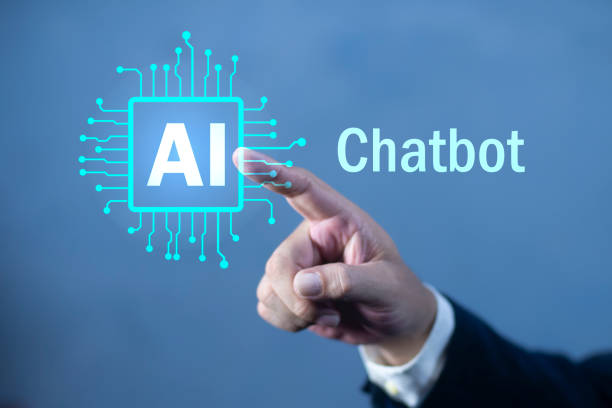
Learning about AI robots requires access to appropriate educational resources.
Fortunately, many educational resources are available in this field that can be used to learn and improve skills.
One of the best educational resources is online courses.
Learning platforms such as Coursera, edX, and Udacity offer various courses in the field of AI robots.
These courses are taught by prominent university professors and industry experts and can help you learn basic and advanced concepts of AI robots.
Books are also valuable educational resources.
Many books have been written on AI robots that can help you gain a deeper understanding of concepts and techniques.
Some well-known books in this field include "Artificial Intelligence A Modern Approach" by Stuart Russell and Peter Norvig, and "Hands-On Machine Learning with Scikit-Learn, Keras & TensorFlow" by Aurélien Géron.
Blogs and articles can also be useful educational resources.
Many AI robot specialists publish their blogs and articles online.
Reading these blogs and articles can help you stay up-to-date with the latest advancements and techniques.
In addition to these resources, participating in conferences and workshops can also help you learn and network with other specialists.
Conferences and workshops provide an opportunity to stay informed about the latest advancements in AI robots and interact with other experts in the field.
By utilizing these educational resources, you can improve your knowledge and skills in AI robots and become a specialist in this field.
Learning Resources
Frequently Asked Questions
| Row | Question | Answer |
|---|---|---|
| 1 | What is an AI robot? | An AI robot is a machine capable of understanding, reasoning, learning, and problem-solving, and can perform complex tasks with relative autonomy. |
| 2 | What are the most important applications of AI robots? | Key applications include industrial manufacturing, customer services (chatbots), medicine and surgery, autonomous transportation, space exploration, and military affairs. |
| 3 | What is the main difference between an AI robot and a conventional robot? | A conventional robot merely follows programmed instructions, whereas an AI robot can learn from data, make decisions, and adapt to new environments. |
| 4 | How do AI robots learn? | They learn by identifying patterns and improving their performance through machine learning algorithms (such as deep learning, reinforcement learning) and processing vast amounts of data. |
| 5 | Can AI robots have emotions? | Currently, AI robots do not possess real emotions in the human sense. They can simulate or detect emotions but do not understand or experience them. |
| 6 | What are the current limitations of AI robots? | Limitations include the need for extensive data, inability to grasp abstract concepts, lack of true creativity, ethical issues, and generalizability challenges in new environments. |
| 7 | What is the role of AI in the development of humanoid robots? | AI helps humanoid robots walk, maintain balance, perceive their surroundings, interact with humans, and perform complex tasks. |
| 8 | How is the future of AI robots predicted? | It is predicted that AI robots will become smarter, more autonomous, and capable of performing more complex tasks in daily life and industry, and their interaction with humans will increase. |
| 9 | Can AI robots replace all human jobs? | It is unlikely that all human jobs will be replaced. Robots will take over many repetitive and dangerous tasks, but jobs requiring creativity, empathy, and ethical judgment will remain. |
| 10 | What ethical and social challenges arise with the expansion of AI robots? | Challenges include issues related to privacy, data security, ethical decision-making by robots, impact on employment, and accountability in case of errors. |
And other advertising agency services from Rasaweb in the field of advertising
- Smart Custom Software: An innovative platform to improve customer acquisition with Google Ads management.
- Smart Link Building: Professional optimization to increase website traffic using intelligent data analysis.
- Smart Advertorials: A dedicated service for growing website traffic based on custom programming.
- Smart Advertorials: An innovative platform to improve campaign management with custom programming.
- Smart Advertorials: Revolutionize sales growth with intelligent data analysis.
And over hundreds of other services in the field of internet advertising, advertising consulting, and organizational solutions
Internet Advertising | Advertising Strategy | Advertorials
Sources
Comparison of Smart Robots on the Market and Buying GuideProgramming AI Robots: Step by StepApplications of Smart Robots in Daily LifeThe Future of Artificial Intelligence and the Role of Robots
? To elevate your business in the digital world, Rasaweb Afarin Digital Marketing Agency offers innovative and effective solutions specializing in secure website design and SEO.
📍 Tehran, Mirdamad Street, next to Bank Markazi, Southern Kazeroon Alley, Ramin Alley, No. 6

